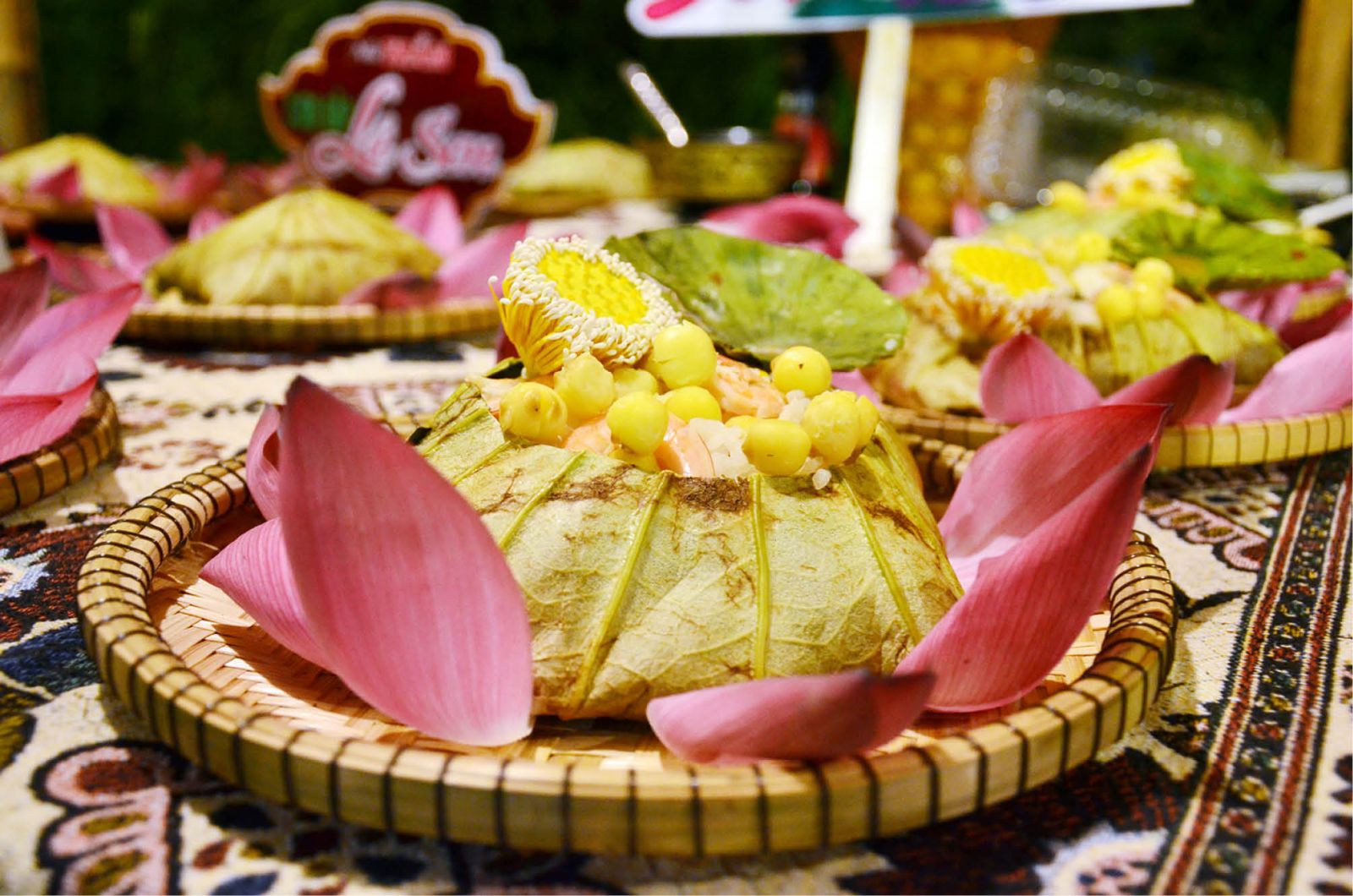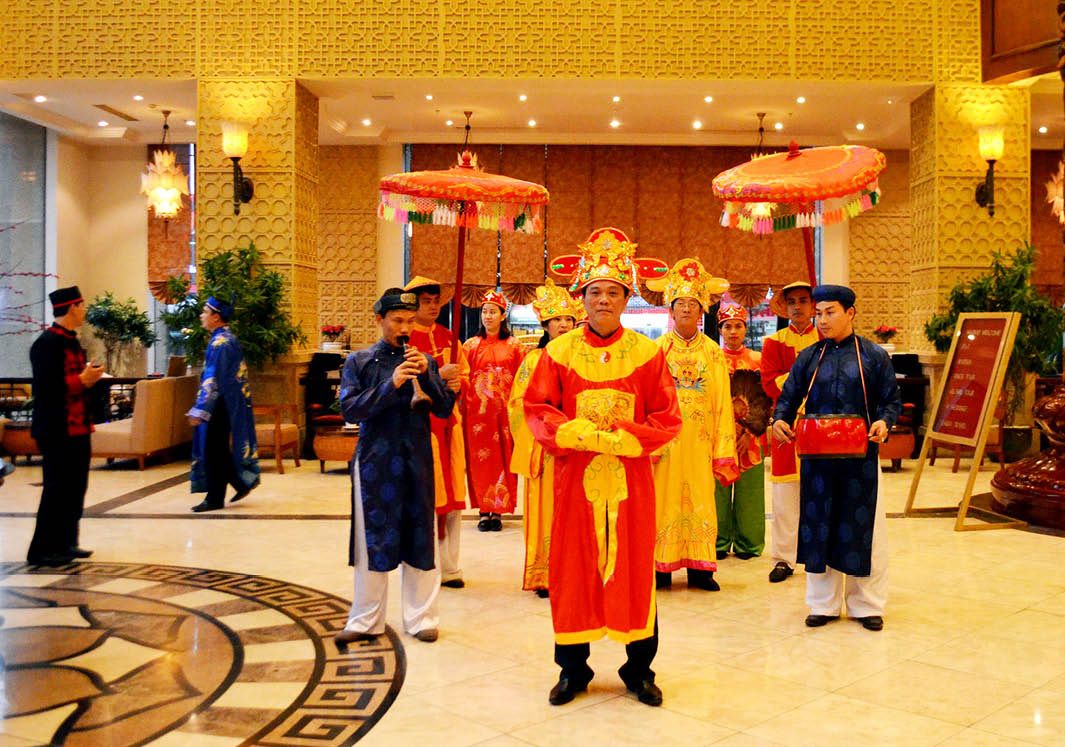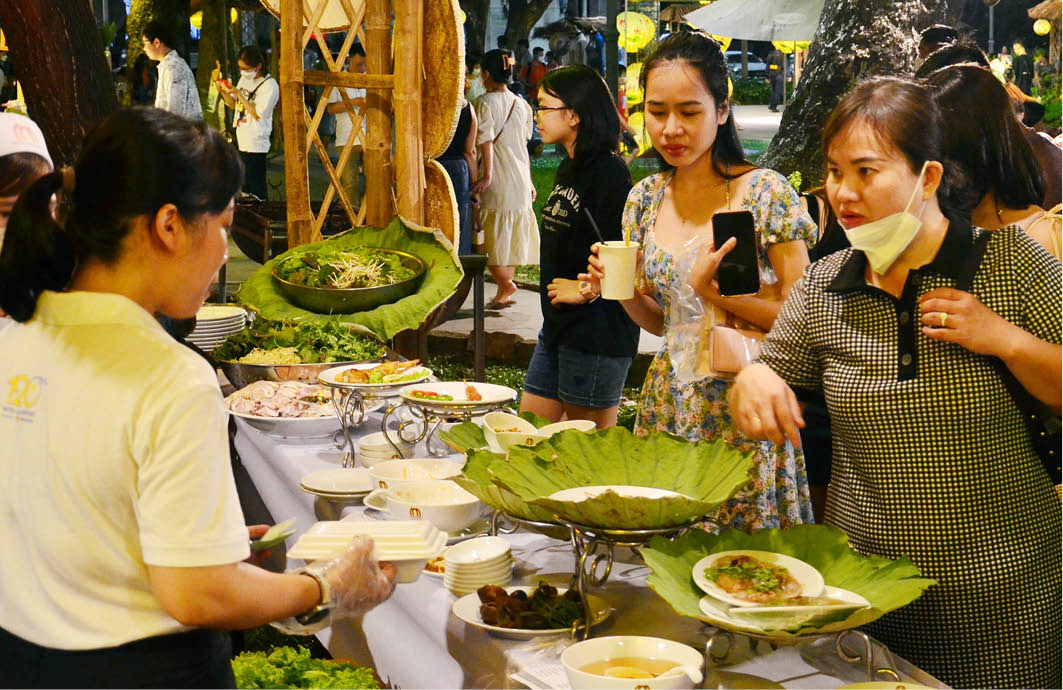
Hue cuisine is not only delicious but also very beautiful
Products to help Hue attract customers
Recently, especially in the domestic peak season (summer) this year, it is not difficult to come across acclaimed reviews and comments on travel forums when tourists come to Hue and have the opportunity to experience the rich and diverse cuisine of the ancient capital.
Tran My Hoa, a tourist from Hanoi, spent the whole 4-day 3-night trip in Hue to "eat the whole world". The female tourist recounted that when arriving in Hue city, her group "plunged" right into the famous pork skewers, beo cakes, nam cakes, and Vietnamese pancakes (banh khoai) restaurant on Pho Duc Chinh street. Then there were the days of eating Hue meals, Hue beef noodle soup, mussel rice, Hue sweet soups ... and also the snacks that young people love, such as snail dishes, bread, pressed cakes, salted coffee...
Delicious and cheap is the opinion of many tourists when coming to Hue and experiencing food. Tran My Hoa shared that the food in Hue is 100/100 points and is excellent for a "food tour". Even the spicy dishes which makes the eyes water are still top-notched. Every dish is delicious and so cheap.
A filling meal of Hue flavor is just over 300,000 VND; mussel rice is only 10 thousand/bowl; snails cost 10 - 30 thousand VND/plate; or an evening wandering around the "Western Streets" of Pham Ngu Lao, Chu Van An, Vo Thi Sau only costs 600 thousand VND… Compared to the price in Hanoi, the price in Hue is only half.
“In the past, my whole group of friends went to Da Lat a few times a year to enjoy the food. After this trip to Hue, the group will change their mind, surely our group of friends will go to Hue a few times a year. I've wanted to be a "muse" of Hue for a long time, now I want to be a Hue bride," My Hoa happily shared.
Recently, famous travel blogger Tran Quang Dai came to Hue for a culinary experience. After the trip, this model shared with people who love to travel tips to find restaurants with authentic flavors: The name of the restaurant starting with mu, me, o (grandma, auntie) is mostly owned by Hue people, so there will be authentic dishes; the places which are small, sloppy, easy to miss have extremely delicious food; when the sellers are older ladies _ the older the owners, the more delicious the dishes.
Many delicious restaurants are not easy to find. They are not on the main road, and one must go deep into the alleys. Those with old signs or even without signs are extremely rustic and deliver the best flavors…
Mr. Tran Thanh Tu, Vice Chairman of the Provincial Travel Association, said that cuisine has been a great attraction to help Hue attract tourists in the past time. When discussing with many tourists the reason for choosing Hue, most said that they want to visit heritage sites and enjoy the food. Delicious and cheap cuisine are two factors that help Hue attract more visitors.
According to tourists, the price of food services in Hue is currently the cheapest in the country. Therefore, the development of tours and serving customers is also more convenient because the price is competitive.

High-class and luxurious Hue cuisine needs more spaces
The need to upgrade the cuisine
The problem that Hue tourism is facing is whether delicious and cheap will be the criteria that Hue tourism and food service people aim to achieve.
Indeed, if every dish is cheap, Hue cuisine will gradually lose its value and be easily trivialized over time. One detail that should be noted is that the reviews of visitors and travel bloggers mainly stop at rustic dishes. There are no articles that are truly impressed with royal cuisine or the "emperor’s meals”, which have been promoted greatly.
From that need, the tourism industry in Ho Chi Minh City has actively created regional links, with locality clusters to build upon each other's forces. The construction of self-contained tours to three locations: Ho Chi Minh City, Thua Thien Hue and Ben Tre needs to be promoted more.
Mr. Tran Thanh Tu analyzed that he had led many tour groups to provinces and cities across the country. Although many dishes cost twice or three times as much as those in Hue, tourists still want to experience them. For example, in Hoi An, eating a bowl of Cao Lau noodles costs 80,000 VND, or chicken rice in the old town with a hundred years of history at 130,000 VND per serving is still acceptable.

Cuisine is an attractive tourism product of Hue
According to Mr. Tu, despite the high price, customers still accept it because of the brand, the history over many generations, and the space to enjoy.
In tourism, the value of the first experience, the difference from the common ground accounts for 30-50% of the value of that dish. When traveling, places with affordable prices are not few, but tourists still choose typical restaurants with high prices. Hue's problem is the lack of such typical spaces and services that tourists are willing to spend money on to experience once.
According to Mr. Vu Hoai Phuong, Rector of Hue College of Tourism, what is lacking in Hue is that it has not yet brought the "desire" to come and experience cultural values, including food. Besides the stream of guests who like the rustic style, enjoying the street spaces, and the small restaurants, there are many customers who like the luxurious spaces and services with high fees.
In order to raise the culinary value, it is necessary to have service quality standards. It is necessary to have typical traditional spaces reproduced, with high-class experiences. For example, royal dishes require spaces and experiences bearing royal imprints, re-creating the values that only guests can experience when coming to Hue.
The barrier of Hue cuisine is the spending level of Hue people. According to experts, 50% of the diners at restaurants and eateries are local customers. For many Hue people, when going to eat a bowl of beef noodle soup, the price of 40,000 VND is quite high. Perhaps it is time for Hue people to be willing to pay more. We have to get used to spending a fee to have new experiences, and new culinary discoveries in new, luxurious and classy spaces.
Story and photos: DUC QUANG